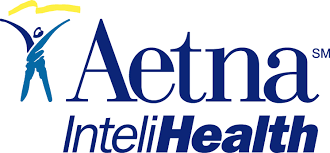Health care provides options for struggling Hoosiers
Health care by numbers
-
687,000: The number of uninsured Hoosiers; 13 percent of Indiana’s population.
-
39: The number of community-based health centers in Indiana.
-
340,000: The number of Hoosiers served annually by community-based health centers.
-
2.5: The rise of percent in 2008 of patients treated at community-based health centers.
-
9 in 10: The number of community-based health center patients who have incomes elow 200 percent of the federal poverty level.
-
473,000,000: The dollars Indiana has saved in health care because of community-based health centers.
-
2/3: The number of uninsured patients Wishard Hospital serves in Marion County, Ind.
-
7: The number of Wishard Community Health centers in Indianapolis, Ind.
-
1 in 7: The number of Hoosiers served by Medicaid.
-
2,000,000: The dollars the state is cuting from the funding of Planned Parenthood Indiana.
-
5: The number of central Indiana Planned Parenthood clinics that are closing.
Health clinics come to the rescue
by Olivia Ingle
Health clinics provide options
by Olivia Ingle
Because more than 687,000 Hoosiers are uninsured, Indiana is offering health care options beyond hospital emergency rooms.
Unemployment and expensive insurance rates have urged Hoosiers to seek assistance from health care clinics.
According to the Indiana Department of Health, Indiana has 39 community-based health centers that provide care to more than 300,000 patients.
Clinics provide primary medical care
 The Jane Pauley Community Health Center opened on Sept. 1 in Eastside Indianapolis and is one of the 39 clinics.
The Jane Pauley Community Health Center opened on Sept. 1 in Eastside Indianapolis and is one of the 39 clinics.
“Certainly the Eastside here has had its challenges,” Pat Donnelly, site manager at the Jane Pauley center, said. “Certain [medical] practices have closed, but others remain solid. I think the number of patients that don’t have the resources they may have once had is definitely increasing as the economy struggles.”
Health centers offer some of the same services that hospitals do, but they stress primary care and offer more options for uninsured patients.
Emily Twichell, a physician’s assistant at the health center, said primary care is important because it gives someone his or her basic health care maintenance.
“They [people] are very grateful just to have a place to go for primary care that is available, easily accessible, and affordable,” Twichell said.
The health center does wellness checks, well-child checks, and physical exams. The center treats people who are ill, as well as people with chronic medical conditions such as diabetes, hypertension, and high cholesterol.
The center charges patients fees based on their annual income.
“We don’t want people not to come because they feel like they can’t pay,” Donnelly said.
According to the Indiana Department of Health, nine out of 10 community health center patients are 200 percent below the poverty level and are uninsured.
Donnelly said about 80 percent of the patients seen at the clinic have been uninsured.
“Certainly from a cost perspective with health care, it’s better for them [patients] to come to a clinic like this than an emergency room,” Donnelly said. “It’s certainly better to do that and use the emergency room for truly serious health matters.”
Hospitals discourage use of emergency rooms
Emergency rooms get their fair share of business.
“Over 100,000 patients come through our emergency room every year,” Collette DuValle of Wishard Health Services said. “So, right now we’re trying to stress that people should see physicians at our clinics.”
Coalition fights for health care
 Carl Ellison, vice president and chief operating officer of the Indiana Minority Health Coalition, agrees that clinics provide a lot of help to individuals.
Carl Ellison, vice president and chief operating officer of the Indiana Minority Health Coalition, agrees that clinics provide a lot of help to individuals.
“Without sliding fees based on one’s income, a lot of people will wind up in the emergency rooms, which are not a very effective or efficient vehicle for receiving care,” Ellison said.
According to the Indiana Department of Health, Indiana has saved $473 million because of care given by clinics instead of hospitals.
“Community health centers are a safety net,” Ellison said. “They’re the next to the last resort for the poor.”
The Indiana Minority Health Coalition not only tries to address the problem of patients not having insurance, they also try to help minorities receive equal health care.
“As an advocacy organization, the only way to eliminate health disparities is to make sure everyone has the same access to common care,” Ellison said. “Universal health care is just a fundamental, societal commitment we have to achieve … We can reduce disparities if everyone can see the doctor without really worrying about it.”
Ellison said society’s objective should be to reach a point where everyone’s cup is full, meaning that everyone has a 10 out of 10 chance of receiving health insurance.
“We need to be a society where the uninsured rate is zero,” Ellison said.
President Barack Obama is currently working with Congress on a health care reform bill to move the United States in the direction towards universal health care.
“It’s a fascinating area,” Ellison said. “Only in America can the richest society have a conversation that goes on about its poorest citizens not getting what they need to achieve greater health.”
The Obama Plan

Polls
Are you uninsured?
Which do you prefer?
Ask the health experts!
Ask about any of your health issues and where to seek treatment!
Click Here
Related Links
Community Health Center Report
The Jane Pauley Community Health Center
Families USA: Hoosiers without health insurance
Indiana Minority Health Coalition
FIND HEALTH CLINICS IN THE INDIANAPOLIS AREA
Filed Under: News

